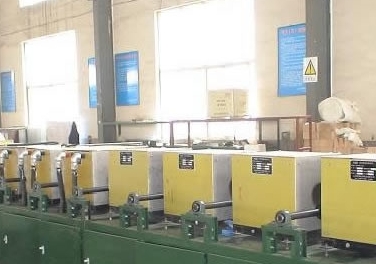- 08
- Feb
誘導加熱炉の出力を計算する方法は?
誘導加熱炉の出力を計算する方法は?

一般に、経験的方法は、の必要な電力密度を推定するために使用されます 誘導加熱炉。 表2-16に、さまざまな周波数での炭素鋼ワークピースに必要なさまざまな硬化層の深さの電力密度を示します。 電源装置の電力は、ワークピースの表面でkW /cm²で計算された電力密度値(P)とcm²で一次加熱領域Aに依存します。 電力密度の選択は、加熱表面積とその焼入れ技術条件によって異なります。 電流周波数が低いほど、部品の直径が小さくなり、必要な硬化層の深さが浅くなるほど、必要な電力密度を大きくする必要があります。 表2-16は、推奨される入力電力密度の値です。 高周波とスーパーオーディオパワーを使用する場合、Pは通常0.6〜2.0kW /cm²です。 中間周波数電源を使用する場合、Pは通常0.8〜2.5kW /cm²です。 さまざまな周波数と電力密度度で得られた深部硬化層の深さ2〜16の炭素鋼硬化層。
表2-16さまざまな周波数と電力密度での炭素鋼の硬化層の深さ
|
/ kHz |
硬化層の深さ | 低電力密度 | 高出力密度 | |||
| mm | in | kW / cm2 | kW / in2 | kW / cm2 | kW / in2 | |
| 450 | 0.4 – 1.1 | 0.015 -0.045 | 1 | 7 | 1.86 | 12 |
| 1.1-2.3 | 0.045-0.090 | 0.46 | 3 | 1.24 | 8 | |
| 10 | 1.5-2.3 | 0.060 – 0.090 | 1.24 | 8 | 2.32 | 15 |
| 2.3-4.0 | 0.090-0.160 | 0.77 | 5 | 2 | 13 | |
| 3 | 2.3 -3.0 | 0.090-0.120 | 1.55 | 10 | 2.6 | 17 |
| 4.0-5.1 | 0.160-0.200 | 0.77 | 5 | 2.17 | 14 | |
| 1 | 5.1 | 0.200 -0.280 | 0.77 | 5 | 1 | 12 |
| 6.1 -8.9 | 0.280-0.350 | 0.77 | 5 | 1 | 12 | |
| Gear quenching along the tooth profile① | 0.4-1.1 | 0.015 -0.045 | 2.32 | 15 | 3 | 25 |
①消光に沿った歯形、インチ3〜10kHzは、低電力密度の電流周波数を使用することを提案しました。
The same hardened layer depth value can be achieved with different power densities and different heating times.
Higher power density and shorter heating time are suitable for lower current frequency; lower power density and longer heating time are suitable for higher frequency. The former heats the surface of the workpiece and conducts less heat to the center part, and the thermal efficiency is higher; while the latter heat conduction is enhanced, and the thermal efficiency is lower. From the perspective of energy saving and that the transition zone of the workpiece hardened layer should not be too thick, the heating time of the surface hardened workpiece should preferably not exceed 10s, and it should not exceed 15s if it is slightly longer , except for special requirements.
多くの最新の高周波焼入れ工作機械には、焼入れされたワークピースの硬化層の深さをkw・Sで制御するためのエネルギーモニターが装備されています。 したがって、必要なkW・s値に応じて、最初に加熱時間sを設定し、次に(kW•s)/ sを使用して必要なkW値を見つけ、必要な誘導加熱炉電源の定格電力値(エネルギーに基づいて)を選択します。 kW・sを監視します。そのkWは一般的に発振電力です)。
